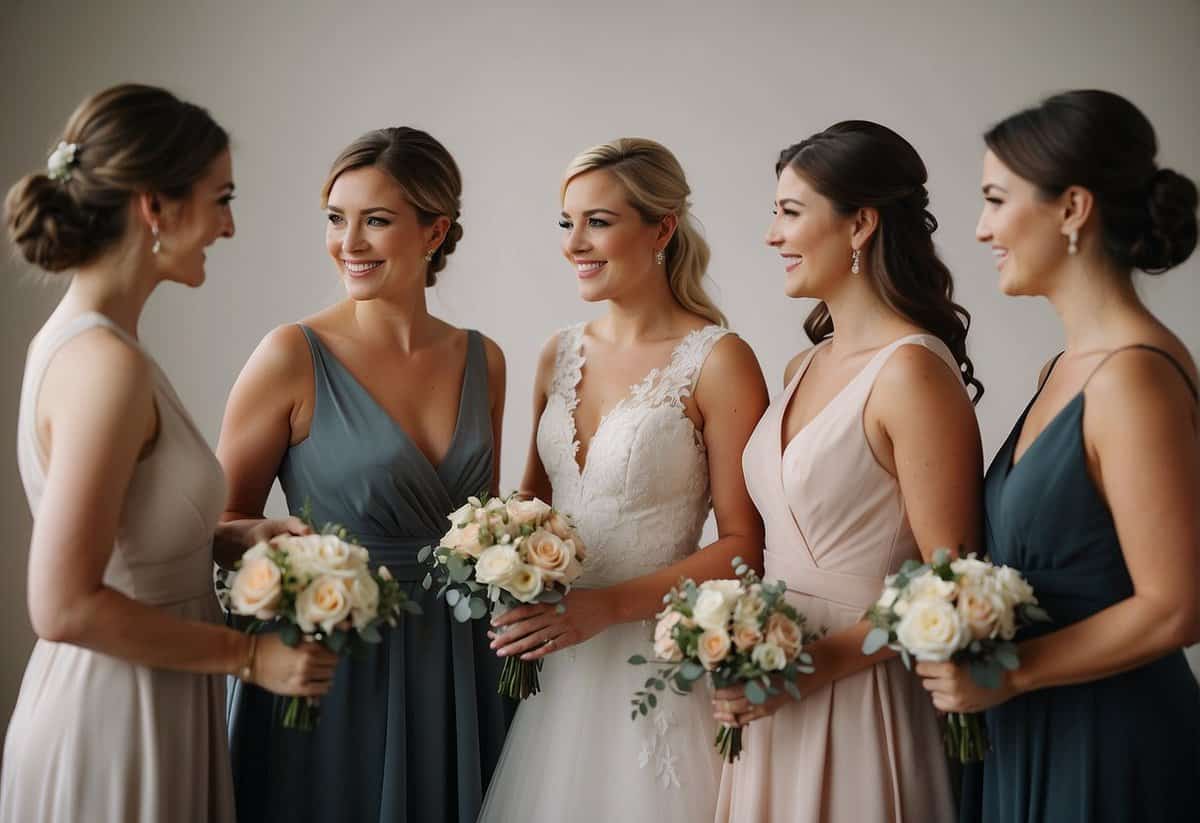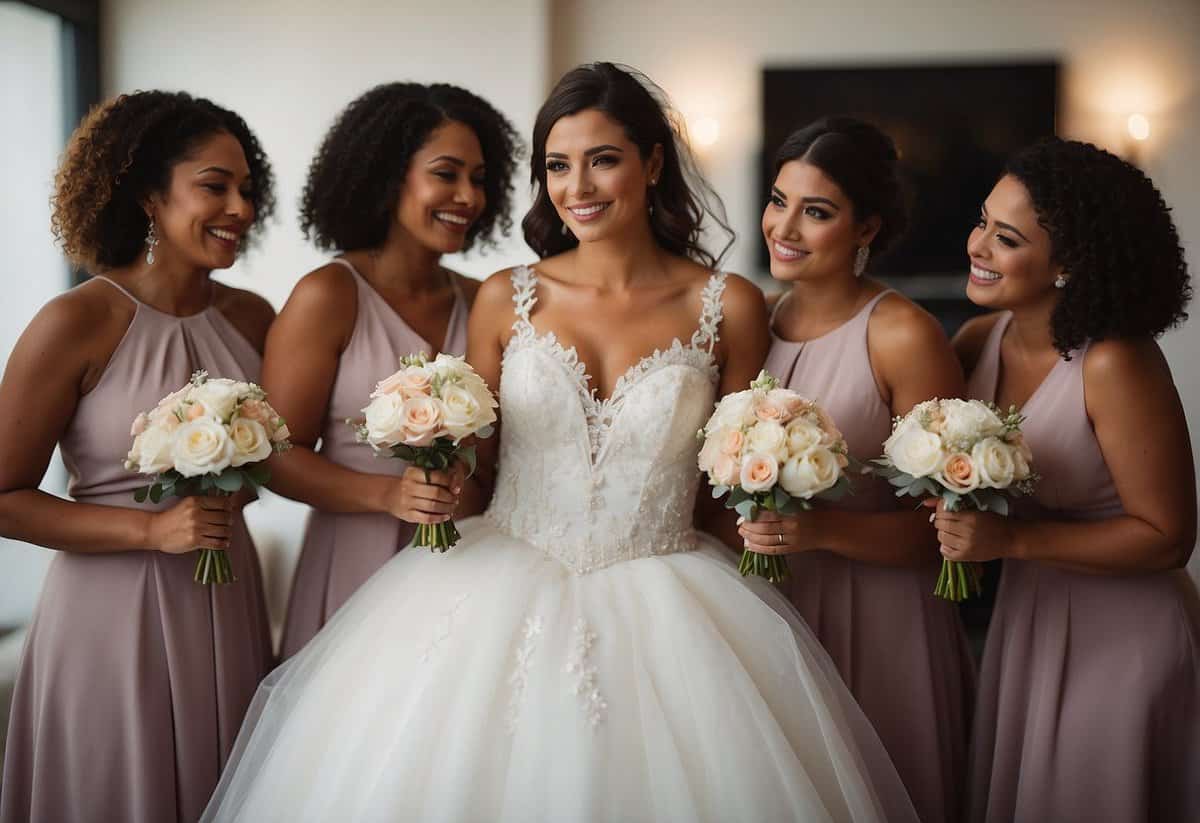Does the Bride Normally Buy the Bridesmaid Dresses? Etiquette and Expectations
When planning a wedding, the roles and responsibilities of everyone involved can sometimes become blurred, especially when it comes to finances. One common question is whether the bride is expected to buy the dresses for her bridesmaids. Traditionally, bridesmaids pay for their own dresses, personalized to fit the color and style chosen by the bride. However, expectations can vary depending on cultural norms, the financial situation of the bridal party, and the personal preferences of the bride and her attendants.

The nuances of this tradition can be delicate. Some brides opt to cover the cost of the bridesmaid dresses as a gift to their attendants, while others may select a dress style and then allow the bridesmaids to choose and purchase their own dresses within those parameters. It’s important for the bride and her bridesmaids to communicate openly about expectations, budgets, and any potential financial concerns from the outset. This not only helps in managing the budget effectively but also ensures that there is no misunderstanding or discomfort as the big day approaches.
Key Takeaways
- Bridesmaids typically buy their own dresses following the bride’s chosen style.
- Open communication about dress costs helps manage expectations and budgets.
- Etiquette varies on whether brides cover the cost as a gift or if bridesmaids pay.
Bridesmaid Dress Basics

When preparing for a wedding, it’s important to understand the roles and traditions associated with bridesmaid dresses, which often sway decisions on style, color, and who bears the cost.
Understanding the Tradition
Traditionally, bridesmaids are expected to pay for their own dresses. This custom assumes that each bridesmaid chooses a dress that fits your wedding’s style and color scheme. Sometimes, you might want to have a more uniform look, which can lead to selecting a specific bridesmaid dress for all your attendants. It’s becoming more common for brides to contribute to the cost, or even cover it entirely, especially if they are opting for a more custom design that might be pricier for the bridal party.
Role of the Bridesmaid
As a bridesmaid, you play a vital role in the wedding. Your dress is not only a reflection of the wedding’s overall aesthetic but also signifies your support and involvement in the special day. Whether you find a dress with a classic style or something more modern, the key is to ensure that the color and design align with the bride’s vision. Keep in mind that alterations are often necessary, so you should incorporate time and budget for those as part of your role.
Financial Aspects of Bridesmaid Dresses

Navigating the financial elements of being a bridesmaid can be tricky. Understanding who is responsible for various expenses and how you can manage your budget is crucial to avoid any financial strain associated with the role.
Who Pays for What
Traditionally, bridesmaids are expected to cover the cost of their dresses. However, this can vary depending on individual wedding arrangements. Sometimes, the bride may decide to pay for the dresses, especially if she has a specific style or theme in mind. This gesture can alleviate some of the financial commitment from the bridesmaids. It’s not uncommon for maid of honor to have additional expenses, often contributing to the bridal shower or bachelorette party.
Budget Considerations
When planning a wedding, it’s essential to factor in the wedding budget and how the cost of bridesmaid dresses fits into it. The average price of these dresses can range from $100 to $500, but they may vary based on the wedding’s formality and chosen retailers. Ensure that any dress selections are affordable for your friends, considering that they have other expenses linked to your wedding.
Cost-Saving Tips
To minimize financial strain for your bridesmaids, here are smarts ways to keep costs down:
- Encourage bridesmaids to select a dress they can wear again.
- Look for discounts or consider off-season shopping for better deals.
- Consider renting dresses rather than purchasing them.
- Opt for custom tailoring over more expensive off-the-rack options.
- Mix and match styles within a color palette to allow bridesmaids to choose cost-effective options suited to their budgets.
By being mindful of your friends’ budgets and offering affordable options, you can help ensure that their participation in your wedding is joyous rather than financially burdensome.
Dress Selection and Shopping

When it comes to picking out bridesmaid dresses, your focus will be on finding a style that complements your wedding aesthetic, feels great for the bridal party, and stays within budget—whether you’re footing the bill or the bridesmaids are purchasing their own gowns.
Choosing the Right Dress Style
Selecting the perfect bridesmaid dress style is crucial in creating your desired wedding look. Consider swatches from designers to match the dresses with your wedding color palette. Mismatched dresses are trendy and allow each bridesmaid to show their individuality while still keeping to your thematic vision. Think about the season of your wedding to ensure the dress style and fabric are appropriate, which will add to the comfort and aesthetic appeal.
The Shopping Experience
When embarking on dress shopping, booking appointments at a reputable bridal salon can provide a personalized and enjoyable experience for you and your bridesmaids. Keep in mind that some brides choose to cover the cost of bridesmaid dresses as a gift, but it’s common for bridesmaids to pay for their own. For affordable and elegant options, be sure to explore Stunning wedding party attire.
Sizing and Fit for All Body Types
Finding the right size for bridesmaid dresses is essential for ensuring everyone feels confident and comfortable on the big day. Bridal salons often have a range of sizes, and most dresses require some alterations for a perfect fit. Advise your bridesmaids to order their dresses well in advance, as alterations can take time, and don’t forget to ask if the salon offers alteration services or if you’ll need to find a separate tailor.
Additional Bridesmaid Attire Considerations

When planning for bridesmaid attire, dresses are just one aspect. Accessories and grooming, such as shoes, jewelry, hair, and makeup, also play significant roles in achieving a cohesive look. Remember, these elements should complement the gown and the overall aesthetic of the wedding day without incurring unexpected costs.
Accessories and Shoes
Accessories: The right accessories can elevate your bridesmaids’ outfits. Consider if you want them to have a uniform look or if they’re free to choose their own. Jewelry like necklaces, bracelets, and earrings should match the wedding’s theme. Be clear about what is expected, especially if you’d prefer them to wear something specific.
- Suggested jewelry: Pearl earrings or a simple bracelet
- Rental options: For budget-friendly solutions, look into renting jewelry
Shoes: Shoes are crucial for comfort and style. Deciding on a specific type and color ensures uniformity. You could also allow your bridesmaids the freedom to pick their own, as long as they stay within the wedding’s color palette.
- Recommended shoe types: Pumps or sandals
- For outdoor weddings, consider wedge heels or flats for comfort
Hair and Makeup
Hair: Hairstyles should complement the overall look but also take into account individual preferences and comfort. You might want to cover the cost of professional hairstyling or allow your bridesmaids to handle their own hair arrangements.
- Alteration costs: Keep in mind that hairstyles might need to adapt if alterations to the neckline of the gown are made.
Makeup: Makeup helps to polish the look. Decide whether to hire a makeup artist for uniformity or to let the bridesmaids do their own makeup. This is also an opportunity to possibly share costs; if you’re hiring a makeup artist, consider helping out with their fees.
- Wedding day tip: Provide a small emergency makeup kit for touch-ups.
Frequently Asked Questions

Navigating the duties and expenses for bridesmaids’ attire can be complex, but understanding who typically pays for what can simplify the process for you and your bridal party.
Who is responsible for the cost of bridesmaid dresses?
Traditionally, bridesmaids are expected to pay for their own dresses. However, if you choose to cover the cost, it can be a generous gesture that is certainly appreciated.
What is the etiquette on bridesmaids paying for their own dresses?
Etiquette suggests that bridesmaids generally purchase their own gowns, although some brides choose to gift the dresses or subsidize part of the cost.
How can I discuss bridesmaid dress expenses with my bridal party?
Open communication is key. Discuss your vision for the dresses and be transparent about costs, giving your bridesmaids the opportunity to speak up about any budgetary constraints they may have.
Is it typical for bridesmaids to cover the cost of their hair and makeup?
Yes, bridesmaids often pay for their own hair and makeup, but if you’d like a specific style, consider paying for these services as a kind gesture or discussing cost-sharing options.
What are common practices for bridesmaids’ dress shopping arrangements?
It’s common for bridesmaids to have a say in the dress selection to ensure they feel comfortable and confident. Some brides coordinate shopping trips or fitting appointments for a collaborative experience.
How do bridesmaids commonly handle expenses related to the wedding attire?
Bridesmaids typically manage dress expenses by budgeting for the cost and alterations. Remember to factor in potential additional expenses such as accessories and tailoring when planning your wedding budget.

